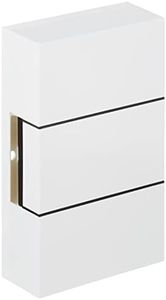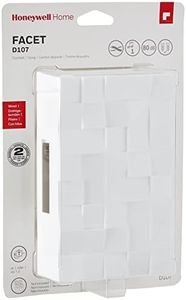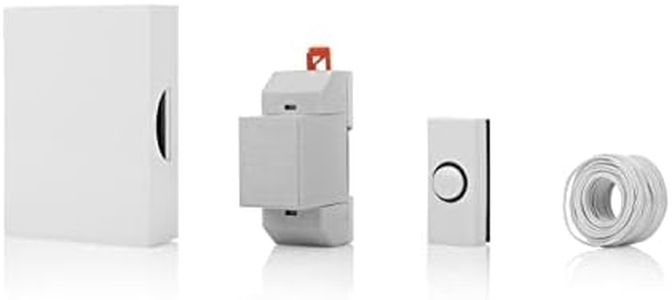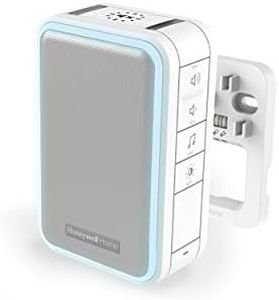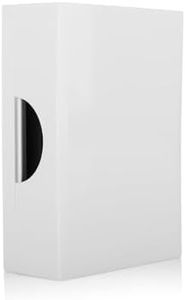We Use CookiesWe use cookies to enhance the security, performance,
functionality and for analytical and promotional activities. By continuing to browse this site you
are agreeing to our privacy policy
10 Best Wired Doorbell Chime
From leading brands and best sellers available on the web.Buying Guide for the Best Wired Doorbell Chime
Choosing a wired doorbell chime is all about finding a device that suits your home’s layout, your preferences for sound and style, and is compatible with your current wiring. Since the chime is the part you’ll hear every time someone rings your doorbell, you want to make sure it’s both noticeable and pleasant. Start by evaluating where you’ll place it, and consider the volume and chime sound that makes sense for your living space. It’s also important to make sure the chime you pick works with your existing doorbell button and transformer power source.Number of Tones/ChimesThe number of tones or chimes refers to how many different sounds the doorbell can make, often to distinguish between front and back doors. Some chimes offer a single 'ding-dong' while others can play multiple tunes or assign a unique sound per entrance. If you have more than one entry door with a button, choosing a chime that offers at least two distinct tones helps you know which door is being rung. For those with only one door, a single chime is sufficient, while households with multiple entryways benefit from extra tone options.
Volume ControlVolume control allows you to adjust how loud the chime sounds. In some homes, the doorbell needs to be heard from a distance or over background noise, while others may prefer a gentler tone. Wired chimes typically range from models with a single fixed volume to those with variable sliders or switches. If you have a large or multi-level home or noisy surroundings, pick a model with adjustable or higher volume settings—for smaller or quieter spaces, basic models with moderate volume may be enough.
Compatibility (Voltage)Compatibility mainly means the chime can work with the voltage provided by your doorbell transformer (usually 16V, sometimes 24V). If your chime isn’t matched to the transformer, it might not ring properly or could even be damaged. Check your existing transformer’s output and make sure any chime you consider is rated for the same voltage. If you’re not sure, look for chimes with a broader voltage range or consult your home’s documentation.
Wiring ConfigurationWired chimes often support single-door or two-door wiring, meaning they can connect to either one or two doorbell buttons. The wiring also needs to match your home’s existing setup, typically a two- or three-wire system. When selecting, check whether the chime supports connection to all the doorbell buttons you intend to use. For most basic homes with one bell button, simple wiring is fine. For homes with a front and back (or side) button, choose a chime with the right terminals for multiple buttons.
Chime Sound StyleSound style refers to the tone quality and type of chime, such as traditional mechanical 'ding-dong,' electronic beeps, or even melodies. This choice is mostly personal—mechanical chimes deliver a classic sound many people find familiar, while electronic chimes can offer unique or softer musical tunes. Consider what matches your tastes and the atmosphere of your home. If you prefer classic, go for mechanical. If you want something different or softer, explore electronic options.
Size and AppearanceDoorbell chimes come in various sizes, shapes, and finishes, from simple white boxes to decorative coverings. Since the chime will often be visible in a hallway or common area, you might want it to fit in with your home’s style. Consider the space where you plan to install it and any preferences you have for color or form. Choose one that blends well with your interior or stands out as a decorative piece, depending on your taste.

